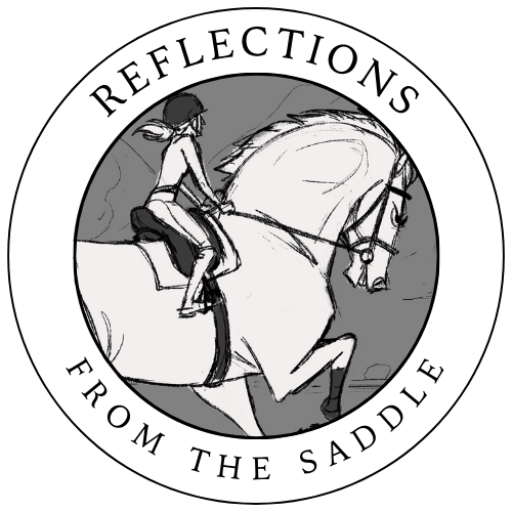I recently read an article where the author was professing that he had tried positive reinforcement with horses and was here to say it didn’t work. Right away my interest was piqued. This has NOT been my experience at all. In fact, I have seen the direct opposite. I have seen it work what seems like miracles. So what gives?
Let’s take an example.
John’s horse Smokey was extremely hard to catch. Anytime he saw John coming near his field he would run to the opposite end. When John would actually enter the field, Smokey would stay just out of arms reach playing games with John until he would give up. So John reads this article about positive reinforcement. “Now he’s armed” he thinks. He knows too well how much Smokey likes Stud Muffins. So this time he heads out into the field to catch Smokey. Well smart Smokey right away notices the bag of treat in Johns hand and VIOLA! allows himself to be caught. “I’m onto to something now” John says as he places the halter over Smokey’s head.
This continues for about 2 weeks. Then one day, Smokey decides, “Na, I’m not falling for that trick today”. John’s befuddled. What went wrong? He tries again the next day. Again, Smokey will have nothing to do with being caught. This continues for a week. Meanwhile, John has resorted to shaking the bag of treats and sharing them with the other horses. Nothing works. John finally gives up. “This positive reinforcement idea is crap” he says as he walks back to the barn without a horse in tow.
WHAT? Reinforcement Doesn’t work?
In some instances no, it doesn’t.
What John failed to realize is that positive reinforcement is a little more complicated. It requires a thinking trainer just like any other method. So why did Smokey decide that he would pass on the Stud Muffins and stay in the field? Why did positive reinforcement fail?There could be multiple reasons. Here are just some.
- Luring doesn’t teach the horse anything. Dangling treats, shaking buckets, enticing with carrots doesn’t work. The horse is only following the food. They aren’t thinking and they aren’t learning. What happens the day you forget the treats or carrots? The horse goes back to his previous behavior having not really learned to come and be caught.
- The Stud Muffin isn’t rewarding enough. While the treat may taste really good, maybe the rain gave the spring grass a nice jump of growth and that tastes just as good too. So John’s reinforcement/reward lost value.
- John only comes out to the field to catch Smokey when he wants to ride. This is again another case of the reward not being of enough value. Smokey is a little sore from last weeks training and decides the treat isn’t worth the pain.
- There are no consequences to Smokey not being caught. In fact, if he avoids John he gets rewarded by getting to stay out with his buds and eat more grass.
So how might we address all these potential problems. And in this case I would use all these suggestions to train Smokey to be easily caught at anytime by anyone.
- Take treats out in the field to catch Smokey but don’t flaunt them. If he allows himself to be caught then and only then does he get to see you have a reward.
- Try carrying different rewards and many of them. Something really valuable that Smokey doesn’t get any other time.
- Go out and give Smokey a treat in the field without catching him. Or catch him and immediately release him. Better yet, catch him, give him the reward then take him someplace even better to graze. Vary this up so that every time you enter the field, Smokey doesn’t know whether you’ve come to ride, take him hand grazing, just to say hello or for the farrier.
- If and when Smokey refuses to be caught, employ some good ole horse whispering techniques to ensure consequences. One of my favorite is to slowly (walking, no running or chasing) follow the horse around so he can’t stop and eat. At first this technique may take a while because in the past the horse has learned that running away has gotten the human to give up. However, eventually he will realize that it’s easier to be caught than to keep walking and not be able to graze or hang out with his buddies. A few sessions of this and he will get easier and easier to catch, reward or not. NOTE: I have totally stopped using any sort of consequence for not being taught. Instead, I go out in the field and play games with my horse working on connection. That way I give the horse a choice. This has worked much better. When I stop all sort of manipulation and truly accept what my horse’s choice in the moment, I find they seek me outm more when I am around.
See how each of these is not about positive reinforcement failing to work but about the trainers application of the principles. The principles are fairly easy to understand but it takes skill to apply them in each situation to ensure success. It’s kinda like your first experience riding a horse. You are taught to pull back to stop and kick to go forward. Once you start taking serious riding lessons, you realize it’s much more complicated than that. That what you once were told was a gross over simplification of the process. It’s the very same when someone says use positive reinforcement and reward your horse for doing what you ask. It’s a gross over simplification of the process. If training were that easy, everyone would be an expert.

